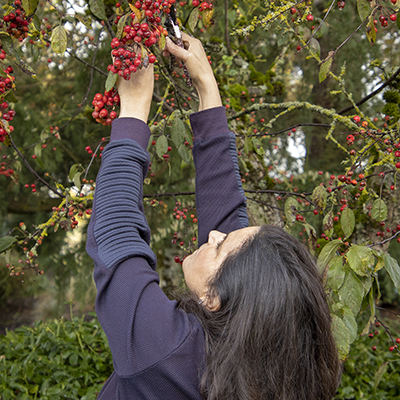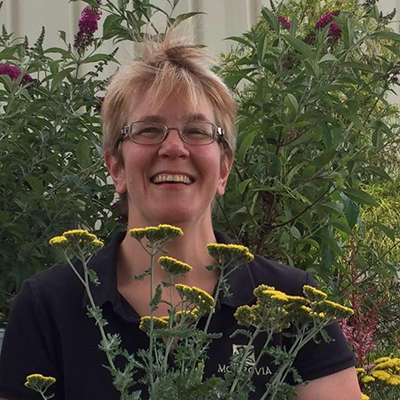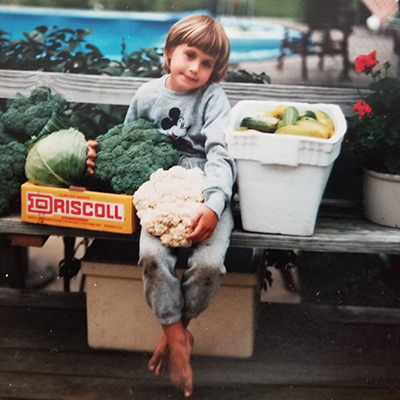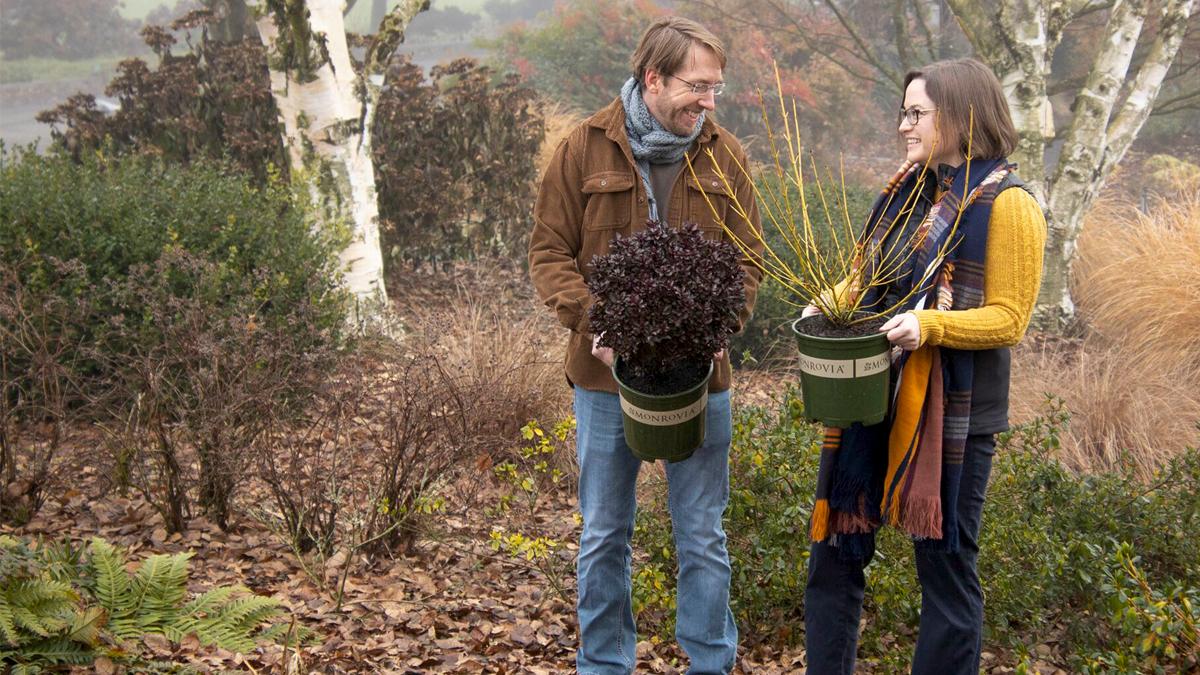Everyone has to start somewhere when it comes to gardening. Along the way there will be happy green growth. As well as plants that, well, let's just say become excellent material for the compost pile. In this new series we, the craftsmen of Monrovia, each share our gardening journey. There will be stories about what inspired us to pick up a trowel and plants that changed our lives. As well as how we learned from our mistakes (note–I'm going first here with my own winding path to success).
Gardening is about sharing (and joy, passion, beauty, community, stewardship, and, well, it’s just fun). We hope you will share your story with us in the comments below.

I love lavender (Lavandula). The clean scent, soft color, how bees make a beeline for it.
When I moved to Los Angeles from New England it was the first thing I planted. Massive displays of this shrubby perennial were planted in nearly every yard, and it could be found popping up in the cracks of pavement. “Famously tough” doesn’t even begin to describe it’s nature. Imagine then my “what the what” reaction when one, then another, and then a third lavender plant wilted, withered, and finally turned to sticks.
It took me SEVEN tries before I finally realized that some plants thrive on benign neglect. Thinking, hey, I’m a expert here, I had followed my usual rule book–amend the soil, water several times a week, plant at the level of the nursery container, mulch–and basically loved the poor plants to death.
Nature taught me a great lesson about the perils of horticultural hubris. I now ask questions of other gardeners and read plant labels. Oh, I can now grow lavender to rival the South of France. — Kate, Dayton, OR

I came by my love of gardening from my Uncle Francis. We all are now aware of the importance of pollinators like birds, bees, and butterflies to our gardens, food security, and the health of our planet, but he was way ahead of the curve on this.
We would go over his house every Saturday or Sunday when I was young and he would talk to me about the tiger lilies, phlox, foxgloves, and all the other amazing flowers, pointing how each attracted birds and butterflies to his garden. He would walk me through his expansive vegetable garden explaining how to tend it in order to get bigger and better crops. When I would stay at his house he would read me The Old Farmer’s Almanac. His passion for the plants in his garden inspired my career in horticulture.
Thanks to the lessons I learned from him, when I plant in my own garden, I plant for pollinators. — Kim, Granby, CT

My grandmother was an avid gardener who inspired me, at age 14, to plant my first garden, a tiny patch in my parent’s backyard. I had little money, but a pack of seeds was cheap enough. I chose elegant foxgloves, and soon enough had big bushy plants popping up. Success!
Well, spring turns to summer, and while other’s gardens are past their prime, I still have no flowers. How could this be? They must be weeds and my seeds have failed. So I weed my garden, pulling these big, beautiful, but non-flowering plants.
Time goes by and I decide to read the back of the seed packet. Hmm, foxglove is a “biennial.” What exactly does that mean? It means the seed produces a plant the first year that goes dormant for the winter and comes back the next year to flowers brilliantly and reseed for the following season. My foxgloves were compost by that time, but this is how I learned about biennials.
Twenty years later I now have several successful gardens, continue make mistakes, and happily work in the industry. — Lydia, Granby, CT

I can’t remember a time when I wasn’t gardening. I grew up in a small Illinois town where we had a huge vegetable garden (we’d call it an “edible garden” now, of course!) and I spent every minute I could hands in the soil learning the connection between great food and how it’s grown. In college I worked at a local garden center where I became obsessed with ornamental trees, shrubs and perennials. I discovered that I loved selling plants as it was just another way for me to talk about my passion.
At University of Wisconsin-Madison where I studied Ornamental Horticulture, I had the most inspirational professor. He encouraged me to follow my dream of a career in horticulture so off I went to work at Monrovia’s nursery in Azusa, California.
I’m back in the Midwest now working with local garden centers that offer our plants. My love of gardening is only equaled by my love of making great food for friends and family, so yes, I still have a big backyard vegetable patch. — Sarah, Chicago, IL

I’ve never been big on annuals so I can’t remember why I thought it was a good idea to buy a Zone 7 plant when I live in Zone 5b. But I found myself three years ago with a lovely Moonlight Chinese Fairy Bells (Disporum Moonlight), an herbaceous perennial for shade. I planted it figuring I’d get a good summer out of it before winter zapped it.
It was stunning all summer long and provided beautifully variegated curly leaves that found their way into almost every bouquet I made that year. Winter came, it died back to the ground, and I shoveled mounds of snow onto it for months. Welcome April and a happy surprise when I see sprigs of green where my beloved Chinese Fairy Bells was planted! Not only did it survive that winter (insulated by all that shoveled snow), but it has survived three more, and comes back just a beautiful as the year before!
Moral of the story? As Janet Kilburn Phillips would say, “There are no gardening mistakes, only experiments.” Try it, gardening is easier than you think! — Carrie, Dowagiac, MI
So, what’s your story? Please share in comments below.
Did you find this story useful and interesting? Please share it with others who also love to garden (use the icons at the top of page). And, consider subscribing to our monthly newsletter to be in the know! (Plant Savvy, sent the first Thursday of each month direct to your inbox).





Please login to comment.
Don't have an account?
Sign Up for free